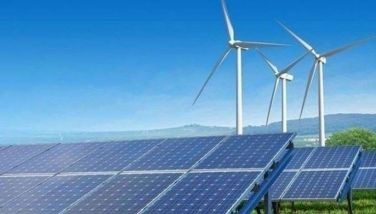Rainforests and the Amazon: Economic development and the environment

The news of the week for environment watchers is the extensive Amazon fires. Burning forest lands in Brazil flashed across TV and has raised alarmed commentaries about global warming.
Lungs of planet Earth. The Amazon is the world’s largest rainforest area, 60 percent of which is found in Brazil. The rainforest stretches from the high mountain ranges of neighboring countries and winds down into the meandering Amazon River valley across the geographic mass of that country.
The rainforest is home to several million species of plants, animals and insects of great diversity. Such an eco-system is important in providing support to the cooling of the planet we live in. The forest plays an important role in cleaning the air that we all breathe and also in cooling the planet because of its impact on keeping the cloud cover and inducing more rainfall.
It is a “carbon sink” that helps to suck up the global emissions of carbon dioxide coming from industrial wastes from factories, autos and all gas-emitting engines. By reducing these carbon wastes, it is crucial to the cooling of the global temperature This carbon sink, therefore, plays the role of breathing machine in our environment. In this sense rainforests are like the lungs for planet Earth.
Hence, the protection of the Amazon rainforest is critically important in the fight against global warming. The preservation of the Amazon is a real challenge not only for Brazil, but also for the whole world because it is the largest such forest system in the world.
Across the few continents of the world and among countries where there used to be relatively large forest cover before, such eco-systems have been in retreat due to over-logging and extensive conversion to agriculture and careless management of the environment.
Growing awareness of environmental issues have, therefore, brought into the forefront concerns about the tricky relationship of economic activities of man and their effects on the overall eco-system of the whole planet.
Environmentalists stress that the diminution of the rainforest is reaching a very perilous level today.
Economic development, industrialization, land clearing and population. Throughout human history, man’s economic activity has used the bountiful resources of nature in order to produce and consume.
When the world’s population was very small relative to the size of the planet, the expansion of human activity hardly made a dent on the natural resources offered by nature. Nature in its primeval settings abounded.
The Industrial Revolution gradually changed all that. For centuries, man’s progress did not seem to encroach heavily on nature’s relatively abundant resources.
In some cases, man’s progress led to the invention of tree plantations to expand the supply of a particular species directly useful to man’s needs, hence making possible reforestation of barren lands. So, we have countries today that continue to thrive in the industry of regeneration through forest plantations.
Even then, plantations represent only an aspect of reforestation that has eliminated the diversity of nature. Monoculture of species has led to the extinction of species of fauna and flora that could not thrive in much-ordered re-invention of industrial forests.
Moreover, the general and more dominant drift of continued industrialization and development was ever-improving technology that relied on more intensified use of carbon fuels to energize production.
This had the consequence of building increasing amounts of gas emissions in the environment that changed that balance of the overall eco-system of the world.
Such reality is what scientists who have studied the world we live in from many different angles, and working independently, have discovered.
Part of the equation of industrialization’s effects on the environment was the result of population growth, too. Growth in numbers overcame stable, low level populations because improvements in science and medicine made food and improved nutrition to families.
In turn, however, population growth created more pressure for the opening of land for food production as well as for other needs.
In 1804, the world’s population was one billion people. It took around 127 years, around 1924, for the population to reach two billion. Today, the population of the globe is estimated at 7.7 billion.
The implication of such a population level on the requirement for food as well as for other supplies of needs can only be imagined. They are enormous, and they continue.
Technological progress, the engine of human progress, has kept the production of food supplies at pace with the growing population. The dire predictions of Thomas Malthus about the limits of population growth because of the fixity of resources might not seem threatening anymore.
But when we focus on the diminution of the world’s rain forests and the changing environmental balance that appears to find expression in what we today depict as an effect of climate change – the experience we call global warming that everyone talks about – we might yet see a clear Malthusian outcome nearby.
Back to Brazil’s Amazon. The demand for more agricultural land in Brazil has increasingly encroached on the Amazon especially since the 1960s. Brazil’s international trade has relied heavily on exports of agricultural products.
The process has not stopped, but it had intense episodes in previous decades. During the 1990s, it is estimated that an area equal to the size of Spain had been clear-cut, primarily to make way for cattle, soybean, corn and other farming.
The current fires observed have been much more intense lately. Data released by Brazil’s National Institute of Space research indicated that a total of 76,000 wild fires have been observed so far this year and that more than half of the fires were in the Amazon region.
Such information had not escaped the attention of the world, including world leaders. French President Emmanuel Macron had said that the G-7 meeting would take up the problem in its deliberations.
Observers of the intensity of forest fires this year appears to show a change in government policy, which has opened up more land for agriculture.
This is currently the state of play. Not only are farmers in need of more land if only to sustain the level of soil productivity, but there is a growing need to meet the ever increasing demand for agricultural food products.
My email is: [email protected]. For archives of previous Crossroads essays, go to: https://www.philstar.com/authors/1336383/gerardo-p-sicat. Visit this site for more information, feedback and commentary: http://econ.upd.edu.ph/gpsicat/
- Latest
- Trending































